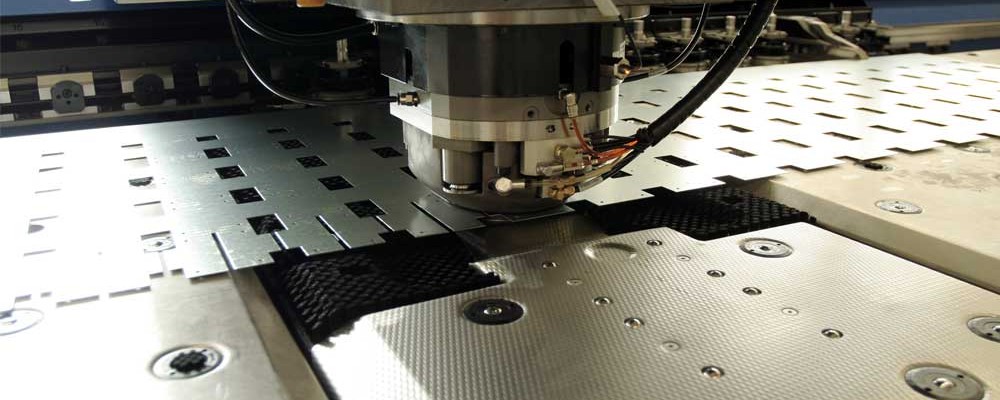When creating shapes in sheet metal, the 2 most common processes are to either laser cut, or punch the material into the desired shape.
As both processes can create similar results, choosing the best process is dependent on the intricacy of the parts and tolerances required, the thickness of the sheet metal, and the production volumes.
So, what is the difference between the two?
Laser Cutting
|
Punching/Pressing
|
| As the name suggests, the laser cutting processes using lasers to cut into sheet material, based on a CNC program, to create an exact physical replica of the design. | Pressing or punching, in it’s simplest terms, is like using a cookie cutter; where a die is pressed down into the sheet material at force, to press/punch out the desired shape. |
What to consider when choosing between laser/press?
- What shape is being cut, and how many holes are there in the design?
If the internal holes or outer shape is irregular, so would require multiple fixtures/dies in order to punch this, it would be more efficient to laser cut the entire design.
However, if the holes are regular in size and shape, punching can be more efficient and cost effective. This comes more into play if the shape has numerous holes, as the die could be made to cut all holes in one punch, rather than being individually cut out on a laser.
- What is the production volume?
On smaller quantities, or if a quick turnaround is required, laser cutting is often the best option as it requires less setup time. The latest CNC machines and software allow for automatic nesting of the design to get the most economical yield out of the material.
On high volume runs, once the initial tooling has been setup, punching (especially if using machines with automatic sheet loaders) offers a quicker solution due to the repeatability and efficiency of the machines.
- What is the thickness of the part?
Laser cutting machines can generally cut through material up to 20mm thick (dependent on the material, in some case we could reach up to 25mm).
Punch presses can punch holes in sheet metal up to around 6mm thickness.
- What about burrs?
Punching can create small burrs (rough lumps of metal around the edges of the outer shape or internal holes) which can cause a problem as these can be sharp to the touch. On more intricate parts with tighter tolerances, this would require extra manual operations to remove the burrs. Sometimes, as the press with slight bend the top face of the holes (called a roll-over edge; and with the burr on the bottom face, this can be accepted as the top finish is clean, and the parts may go off for extra processes such as plating or powder coating.
However, laser cutting will produce clean cuts without the rollover edge or burrs, so can often be the most desirable finish.
Other Options
Sometimes, the design will dictate that a combination of both laser cutting and punching is required, but other times it may need a completely different process in its entirety.
For certain material thicknesses or based on the level of precision required, water jet or plasma jet cutting could be a better solution.
Laser vs Plasma vs Water – Rankings:
(1 = Best, 3 = Worst)
Laser Cutting |
Water Jet |
Plasma Jet |
|
Operating Costs |
3 |
2 |
1 |
Operating Speed/Production Rate |
2 |
3 |
1 |
Edge Finish/Quality |
2 |
1 |
3 |
Number of materials it can cut |
2 |
1 |
3 |
Maximum Cutting Thickness |
3 |
1 |
2 |



